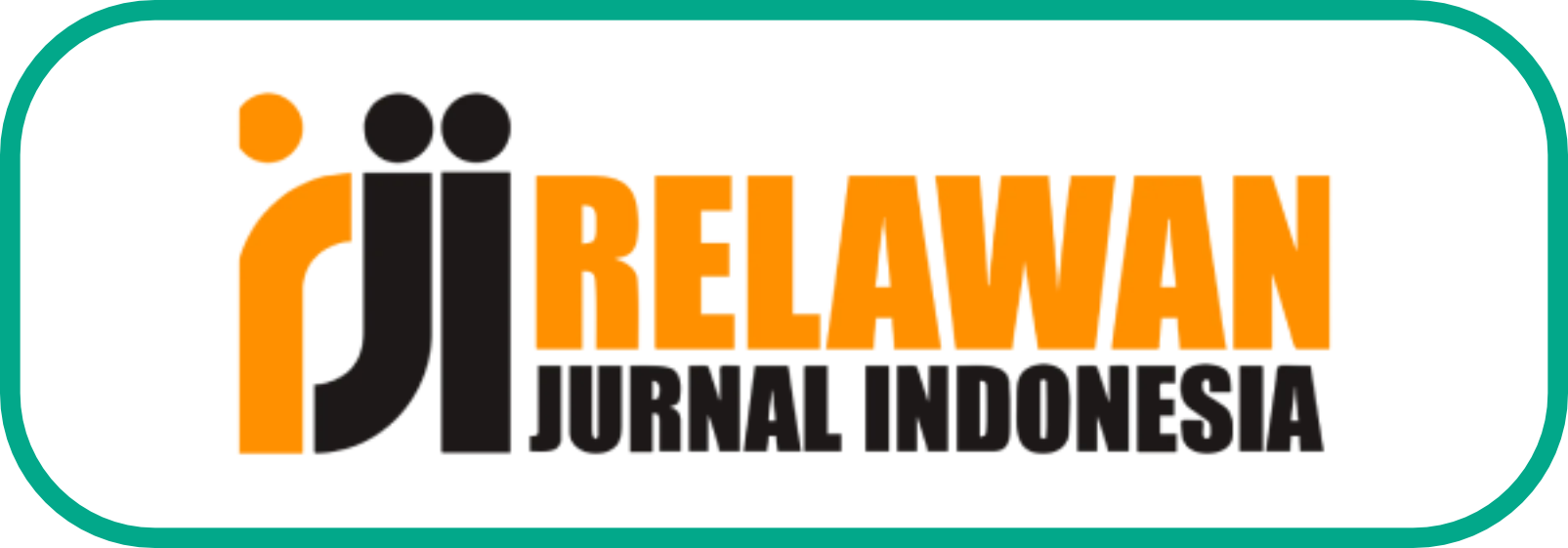HUBUNGAN JAM KERJA DAN KARAKTERISTIK PERAWAT PELAKSANA DENGAN PENERAPAN SASARAN KESELAMATAN PASIEN PADA RUMAH SAKIT DI KOTA PADANG
Sari
Patient safety is now a global issue which is now being reported to the demands of patients
on medical errors that occur in patients. Patient safety goals is a requirement to be implemented in
all hospitals accredited by the Commission on Accreditation of Hospitals. Patient safety goals is
expected to prevent or reduce injury and improve patient safety pasien.Menurut report from IOM
(Institute of Medicine) in 1999 Amarika openly stated that at least 44,000 and even 98,000 patients
died in the hospital within one year as a result of medical errors (medical errors) which previously
could have been prevented, this has resulted in lawsuits experienced increased hospital. This study
aims to determine the relationship of nurses working hours with the application of patient safety
goals. This type of research is a quantitative study, using cross-sectional study with a sample of 93
people. Ways sampling with proportional random sampling. The results showed no significant
relationship between hours of work, length of work and knowledge of nurses with the application
of patient safety goals. Variables related to the implementation of patient safety goals are age and
education. The results of this study can be considered for admission to the hospital on new nurses
need to consider the age factor in early adulthood, lists the nursing staff who will participate in
continuing education and supervision to nurses related to patient safety.
Keywords: patient safety, patient safety incidents
Teks Lengkap:
PDFReferensi
Arikunto, S. (2010). Prosedur Penelitian . Jakarta: Rineka Cipta
Aiken, LH., Clarke. et al. (2002). Hospital nurse staffing and patient mortality, nurse burnout, and
job dissatisfaction. JAMA. 23-30 Oktober. 288(16)1987-1993. 3 Maret 2014.
http://jama.jamanetwork
Ballard, K.A. (2003). Patient safety: A Share Responsibility. Online Journal of issues in nursing.
Volume 8 – 2003 No 3. 6 April 2014.
http://www.nursingorld.org/MainMenuCategories/ANAMarketplace/OJIN
Bishop,A & Scudder (2001). Nursing ethisc: Holistic caring practive. (2 ed). Boston: Jones and
Bartlett Publisher.
Cahyono, J.B (2008). Membangun Budaya Keselamatan Pasien Dalam Praktik Kedokteran.
Yoykarta: Penerbit Kanisius
Carayon, P & Gurses, A.P (2005). A Human factor engineering conceptual framework of nursing
workload and patien safety in intensive care units.. Intensive Crit Care Nurs. 21(5):284-301. 8
Maret 2014. http://www.ncbi.nlm.gov/pubmed
Carayon, P. & Alvaro, C.(2007). Workload and Patient Safety among critical care nurses. Crit
Care Nurs Clin North Am, 19(2):121-9. 8 Maret 2014. http://www.ncbi.nlm.gov/pubmed
Carayon, P & Gurses, A.P (2008). Nursing workload and patient safety: a human factors
engineering perspectives, dalam Hughes R.D (ed), Patient Safety and quality: an evidence-based
handbook for nueses. 30: 1-14. 8 Maret 2014. http://www.ahrg.gov/qual/nurseshdbk/pdf
Canadian Nurses Association. (2009). Position statement patient safety. Otawa The Author. 8
Maret. http://www.cna-aiic.ca/documents/pdf/publication
Choundhry N.K (2005). Systematic:the Relationship Between Clinical Experience and Quality of
Healthcare. Ann Intern Med.140:260-273
Depkes & KKP-RS. (2008a). Panduan Nasional Keselamatan Pasien Rumah Sakit. (Edisi 2).
Jakarta : The Auhor.
Depkes. (2008). Pedoman indikator mutu pelayanan keperawatan klinik di sarana kesehatan.
Jakarta: The Author
Depkes & KKP-RS. (2008b). Pedoman pelaporan insiden keselamatan pasien (IKP). (Edisi2).
Jakarta: The Auhor.
Depkes & KKP-RS.(2011) Peraturan Mentri Kesehatan Republik Indonesia.
No.1691/Menkes/Per/VIII/2011, tentang keselamatan pasien.
Direktorat Bina Pelayanan Keperawatan (2008). Pedoman indikator mutu pelayanan keperawatan
klinik di sarana kesehatan. Jakarta: Direktorat Bina Pelayanan Keperawatan.
Emlise, J.R & Hartley, C.L (2005). International Perspectives on patient safety audit office. Maret
http://www.nao.org.uk/idoc.ashx
Fleming, M. (2006). Patient Safety culture measurement and improvement: a how to” guide. Heald
Care Quarter, 8(1), 14-19. Apri 2014. http://www.chsf.ca
Foster, A.J, (2006). Adverse events following an emergency departement visit. Journal of Quality
and safety in health Care, 16 (1), 17-22. April 2014. http://qshc.bjm.com/content
Gillies, D.A (1994). Nursing manajemen: a sistem approach. (3 ed) Phyladephia:WB. Sauders
Company.
Gurses (2005). Performance obstacles of intensive care nurses, 56(3):185-94. 4 April 2014.
http://www.ncbi.nlm.gov/pubmed
Henriksen, K,,et. Al (2008). Understanding Adverse Events: a human factor framework. dalam
Hughes R.D (ed), Patient Safety and quality: an evidence-based handbook for nueses.. 5: 1-67 8
Maret 2014. http://www.ahrg.gov/qual/nurseshdbk/pdf
Hamid, A.Y.S (2007). Riset Keperawatan: Konsep, etika dan instrumentasi. Jakarta.EGC
Huber, D.L. (2006). Leadership and nursing care manajemen. (3ed ed). Philadephia:Sauders
Elsevier.
Hughes, R.G (2008). Patient Safety and Quality: an evidence base handbook for nurses.Rochville
MD: Agency for Healthcare Reseach and Quality Publication. Maret 2014.
http://www.ahrg.gov/qual/nurseshdbk/pdf
Holloway RG, Tuttle (2007). The safety of hospital stroke care. Neurologi.68:550-55
Joint Commission International, Standar Akreditasi Rumah Sakit, Enam Sasaran Keselamatan
Pasien. Edisi ke-4. Januari 2011
Kepmen No.233. Tahun 2003 tentang jenis dan Sifat Pekerjaan yang dijalankan secara terus
menerus.
Kurniadi A (2013). Manajemen Keperawatan dan Prospektifnya, Jakarta. FKUI
Marquis, B.L & Huston, C.J (2001). Leadership roles and manajement fuctiontions in nursing:
theory and application (3rd ed). Philadelpia: Lippincott Wiliiams & wilks.
Notoatmojo, S. Prof. Dr (2010) Metodologi Penelitian Kesehatan, Ed. Rev. – Jakarta: Rineka Cipta
Nurachmah, E (2001). Asuhan Keperawatan bermutu di rumah sakit. Perhimpunan rumah sakit
seluruh Indonesia (PERSI). 2014. http://www.pdpersi.co.id/artikel
Padilha, K.G, Cardoso, et al. (2007). Nursing activities score in the intensive care unit: analysis of
the related factors. Intesive Crit Care Nurs. 5 April 2014.
http://www.elservierhealth.com/journals/iccn
Reason J (2000). Human Error: modes and management. BJM.2000 March 18:320 (7237):768-770
Robbins, SP (2003). Prilaku organisasi, (Edisi ke-10). Jakarta:PT. Indeks Gramedia.
Rogers, A (2004). The working Hours of Hospital Staff Nurses and Patient Safety. Health Affairs. 3
Maret 2014. http://content.healthaffairs.org/subscriptions/online.stml
Sochalksi, J. (2004). Is more better? The relationship between hospital staffing and the quality of
nursing care in hospital. Med care, 42(2suppl): 1167-1173
Scott D, (2006). Effects of Critical Care Nurses’Work Haours on Vigilance and Patients Safety.
American Journal of Critical Care. 15:30-37. 8 Maret 2014.
http://ajcc.aacnjournals.org/subscriptions
Tappen, R.M. (1995). Nursing leadership and manajemen: Concepts and practice. Thrid edition.
Philadelpia:F.A.Davis Company.
Trinkoff, A.M, Geiger-Brown, J.M, et al. (2008). Personal Safety for nurses. dalam Hughes R.D
(ed), Patient Safety and quality: an evidence-based handbook for nueses.. 39: 1-8. 8 Maret 2014.
http://www.ahrg.gov/qual/nurseshdbk/pdf
Undang-undang Republik Indonesia Nomor 13 Tahun 2003 Tentang Ketenagakerjaan
Vincent, C (2003). Understanding and Responding to Adverse Events. The New England Journal
of Medicine. 341;11. 5 April 2014. http://www.NEJM.ORG
Vahey, D.C.., Aiken, L.H., et al (2004). Nurse Burnout and Patient Satisfaction.NIH Public
Access. Med Care. 5 April 2014. http://www.massnurses.org/safe-staffing
WHO. (2004). World Alliance for Patient Safety, Format Program. Jauari 03. 2014.
http://www.who.int
WHO (2007). Nine life saving patient solution. Januari 03. 2014. http://www.who.int
WHO (2008). Patient Safety Workshop: Learning From Error. Mei 17. 2014. http://www.who.int
DOI: https://doi.org/10.33559/mi.v12i6.841
Article Metrics
Sari view : 295 timesPDF - 1529 times
Refbacks
- Saat ini tidak ada refbacks.
##submission.copyrightStatement##
INDEXED BY :
Lembaga Penelitian & Pengabdian Masyarakat (LPPM). Universitas Muhammadiyah Sumatera Barat
Jl. Pasir Kandang No.4, Pasie Nan Tigo, Kec. Koto Tangah, Kota Padang, Sumatera Barat 25586.
Email : lppmumsb@gmail.com
 This work is licensed under a Creative Commons Attribution-ShareAlike 4.0 International License.
This work is licensed under a Creative Commons Attribution-ShareAlike 4.0 International License.
















